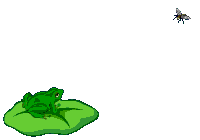![]()
Welcome to the CREC
Technology Workshop
| Family and Student Communications: | |
| Schoolnotes |
Schoolnotes :Teacher Note Input area Schoolnotes: Teacher Word Change
|
| Utilities: | |
| Funbrain and quizlab | |
| Puzzlemaker |
|
| Merging Links and Lessons | |
| Trackstar: Home | Drills: |
| Trackstar:Web Worksheet Search | Quia: Make Drill games |
| Trackstar: Web worksheet Wizard | Web Quests: |
| Sample WebQuest: China | |
| Making A web-Quest | |
| Also, see Above "WebQuest Sites" main link | |
Sample Technology Lessons
Two Of Pam's Favorites:
| Exploring the Environment: Also See "Remote Sensing Page" Link above |
| One Stop Gateway for Lesson Plans : Also see "teacher Resource Page" link above |
Suggestions from Bonnie
NASA
Education On-Line Opportunities
STUDENTS STEER GIANT
TELESCOPE TO ASSIST SPACECRAFT AT JUPITER
Students
at 25 middle schools and high schools in 13 states are remotely controlling huge
radio-telescope dishes in the California desert from their classroom computers
this fall and winter.
Their
work will aid studies of Jupiter to be made by NASA's Cassini spacecraft as it
flies past that planet. The students are using telescopes near Barstow, Calif.,
at the Goldstone tracking
station
of the Deep Space Network, which the Jet Propulsion Laboratory operates for NASA.
NASA Quest connects schools with NASA's people and missions via the Internet through live interactive Web chats, live interactive webcasts, e-mail, informative biographies and journals, curriculum resources and more. NASA Quest offers the opportunity to communicate with NASA scientists and researchers and to experience the excitement of real NASA research as it is happening. To participate in this science in action, visit the NASA Quest Web site.
Astro-Venture
is an educational, interactive, multimedia Web environment highlighting NASA
careers and astrobiology research in the areas of Astronomy, Geology, Biology
and Atmospheric Sciences. Students in grades 5-8 are transported to the future
where they role play NASA occupations and use scientific inquiry, as they search
for and build a planet with the necessary characteristics for human habitation.
Supporting activities include chats with real NASA scientists, online
collaborations, classroom lessons, student publishing area and occupations fact
sheets and trading cards.
JASON
is a unique collaboration that utilizes telepresence technology to grade 3-9
classrooms to join in on and interact with ongoing research missions of the
JASON team. Before implementing curriculum in the classroom and bringing
students to Ames for the exciting broadcast and hands-on activities in the
Spring, teachers must attend a one-day training in the Fall.
What
could be more fascinating this season than learning the concepts of measurement,
number and operation, problem solving and connections with our space travel
expert Dr. Joy and Astroclaus! Join us as they unravel mathematical ideas and
concepts pertaining to space flight - in a shuttle or sleigh.
Contest
runs December 6-12, 2000 Live Interactive webcast is Wednesday, December 13,
2000 10:00 a.m. PT Complete event details will be available December 1, 2000
when the Dr. Joy and Astroclaus pages go live from the North Pole. On Wednesday,
December 6, 2000 a series of 10 questions ranging from elementary to high school
skill level will be posted on the Astroclaus pages. Each question is tied to a
mathematical standard. You may respond to these questions at any time over the
course of the week by submitting your answers to astroclaus@quest.arc.nasa.gov
. Our team of astro-elves will record the correct answers and keep a list of
these good boys and girls answers for Astroclaus' list.
Then on Wednesday, December 13, Astroclaus and Dr.Joy will meet all boys
and girls online in an
interactive
webcast to review the answers and announce students names from around the world
who sent in correct answers. The concept of making connections will be used
during the live webcast as new questions based on the original mathematical
concepts are asked for more added interactive fun. Don't forget to join the
contest in which students submit a descriptive paragraph describing the ideal
Astroclaus sleigh.
Something
in the heavens is growing brighter and it will soon become one of the most
eye-catching stars in the night sky. No it's not a supernova. It's the
International Space Station!
Far-out
Housekeeping in space is a daring adventure, but somebody still
has
to cook dinner and take out the trash. Science@NASA
mailto:Science@NASA
interviews
two astronauts about the thrill and routine of daily life in orbit.
The
art of predicting Leonid meteors officially became a science this weekend as sky
watchers around the globe enjoyed three predicted episodes of shooting stars.
This story includes video and some unusual pictures of Leonid fireballs.
Earlier
this month one of the most intense solar radiation storms in decades temporarily
blinded NASA's Stardust spacecraft, which is heading for a rendezvous with comet
Wild-2.
Microscopic Stowaways on
the ISS
Wherever humans go microbes will surely follow, and the Space Station is no exception. In this article, NASA scientists discuss how astronauts on the ISS will keep potentially bothersome microorganisms under

